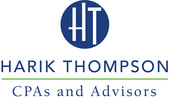|
Are you rethinking your workforce strategy? The pandemic drastically changed markets. Many businesses closed in 2020, others retrenched and still others boomed. As you address your company's needs, are you wondering if you have enough workers to operate effectively? Rightsizing is the process of making a company a more functional size. It's often treated as a euphemism for downsizing, and it can feel that way from the receiving end, but it's not the same thing. It can include hiring as well as layoffs. But you shouldn't be squeamish about laying off employees if that's what conditions on the ground require.
Changing marketing conditions, fluctuating customer trends and pivoting internal goals cause businesses to rethink human resources. Rightsizing is about getting your organization to the right size for its strategic objectives. You may decide on one of several goals for your rightsizing initiative:
Of course, the first step in any initiative is constructing a plan. In this case, your planning process will focus on identifying the company's HR needs and determining whether they are being met. To properly rightsize your company to become more efficient and profitable, follow these steps:
Consider the process Rightsizing sometimes requires hard eliminations of duplicate work so you can run more efficiently and without redundancies. Sometimes it requires paring down a workforce and restructuring certain systems. It's critical that you communicate openly and honestly with employees to ease tension and build trust with your teams. This work isn't a one-time event, but a continuous activity to help your firm more effectively perform to reach its goals. However, a careful look at how your objectives have changed in the aftermath of the pandemic is advisable now in particular. Deciding whether your company is equipped with the skills to succeed can help you determine if rightsizing will help your organization. You may be doing less business than you were in February of 2020, or your employees may be on the verge of quitting due to overwork. Rightsizing engages teams with the structure and resources to maximize their potential, enabling your firm to plan more effectively for the future. You want to properly equip your company to meet its future goals. Rightsizing may be your path leading to the greatest benefits overall, but it doesn't come without risks, so take a holistic view when looking for redundancies to make sure you're as effective as you hope to be. Be prepared to manage a shift in direction and consider working with consultants who can help you with your specific rightsizing needs. Comments are closed.
|
Newsletter articles are posted every 2 weeks. If you would like to have our e-newsletter delivered directly to your inbox, please sign up. Your information is confidential; you can unsubscribe at any time. Subscribe. Categories
All
|
Proudly powered by Weebly

 RSS Feed
RSS Feed